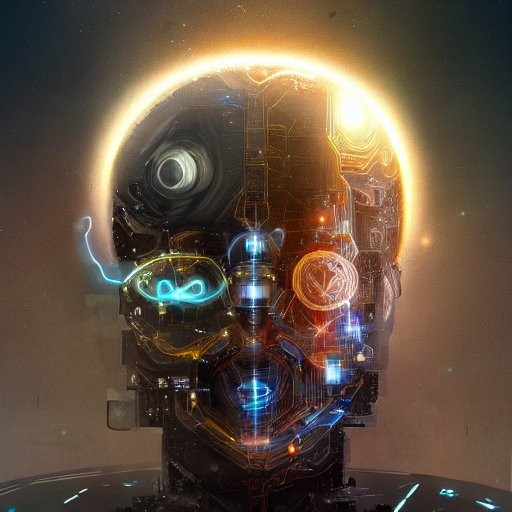The tantalizing promise of quantum computing has captured the imagination of scientists, technologists, and futurists alike. But as the field continues to advance at an unprecedented pace, a salient question arises: how close are we to a ‘real’ quantum computer? This inquiry not only demands a comprehensive understanding of quantum mechanics but also necessitates an exploration of current technological advancements, constraints faced, and the implications of fully realizing this paradigm-shifting technology.
To navigate this query effectively, it is prudent to first define what constitutes a ‘real’ quantum computer. At its core, a true quantum computer should possess the capability to execute algorithms that outperform classical counterparts in meaningful ways—a characteristic often described as “quantum supremacy.” Unlike traditional computers that rely on bits to represent information as either 0s or 1s, quantum computers utilize qubits, which can exist in superpositions of these states, enabling them to process vast amounts of information concurrently. This fundamental distinction serves as the bedrock for the sweeping potential applications ranging from cryptography to drug discovery.
As research institutions and tech giants intensify their investments in quantum computing, we observe a veritable renaissance of innovation. Companies such as Google, IBM, and Rigetti are spearheading efforts to construct quantum processors with increasing numbers of qubits. A notable example includes Google’s Sycamore processor, which reportedly achieved quantum supremacy by executing a specific task in just 200 seconds—an endeavor projected to take a classical supercomputer approximately 10,000 years.
Yet, as we delve deeper, it becomes evident that this triumph, while significant, is merely a stepping stone on a lengthy and complex journey. One of the foremost challenges plaguing quantum computing is qubit coherence. Qubits are exceedingly delicate entities, vulnerable to environmental interference, resulting in erroneous calculations. The phenomenon known as decoherence can swiftly degrade the quantum state, undermining the fidelity of computations. This precarious nature of qubits demands innovative error-correction technologies, which introduce even greater complexity to already intricate systems.
To exacerbate the issue, scalability poses another formidable barrier. Current quantum processors typically contain a mere handful of qubits, as integrating additional qubits while retaining coherence presents a technical conundrum. Think of a delicate spider web—a single disturbance can disrupt its entire structure. As we attempt to engineer larger quantum systems, we must not only preserve coherence but also maintain quantum entanglement, wherein qubits become interdependent in ways that classical bits cannot replicate. The challenge lies in ensuring that these entangled states remain intact through myriad external variables, enhancing the overall stability of the quantum computer.
Alongside coherence and scalability concerns, the prevailing paradigms of quantum computing span various approaches, including superconducting qubits, trapped ions, and topological qubits. Each has its unique merits and drawbacks, fostering an environment of vibrant research and competition. The question then arises: will the future of quantum computing hinge on a singular approach, or will a symbiotic ecosystem of diverse technologies emerge? Some theorists argue that no one-size-fits-all solution will suffice, suggesting a hybrid landscape, blending the strengths of multiple frameworks, thus catering to the nuanced demands of different applications.
Transitioning from theoretical foundations and technological quandaries, one must consider the ethical implications inherently tied to the advent of quantum computing. The unparalleled processing power offered by a functional quantum computer could render current encryption methods obsolete, posing a substantial threat to data security. Lawmakers, technologists, and ethicists must grapple with this impending reality, morphing the narrative from mere technological prowess to a discourse on societal impact and governance. How shall we safeguard sensitive information in a quantum era? What regulations ought to be enacted to prevent misuse of such formidable capabilities?
Concurrently, the convergence of quantum computing with other cutting-edge technologies such as artificial intelligence could yield transformative outcomes. The symbiosis of these domains raises intriguing prospects for enhancing machine learning algorithms, optimizing logistics, and advancing material science. However, the intersection of quantum and classical technologies introduces another layer of complexity—just as classical AI is entrenched in data-driven learning, quantum algorithms will necessitate fresh paradigms of understanding data representation and manipulation.
To summarize, the question of how close we are to a ‘real’ quantum computer is layered with complexities that span the realms of physics, engineering, ethics, and societal impacts. While the strides made in recent years are commendable and the prospect of achieving quantum supremacy tantalizing, numerous challenges remain. Coherence, scalability, technological diversity, and ethical considerations constitute formidable players in this unfolding narrative. As researchers forge ahead, we find ourselves caught in a web of anticipation and caution, poised to witness the profound transformations that quantum computing promises. For now, one can only speculate: when will the quantum dawn truly arrive, and what will it signify for humanity’s trajectory in the digital age?












